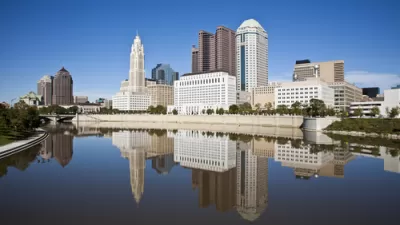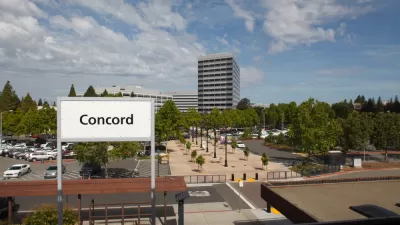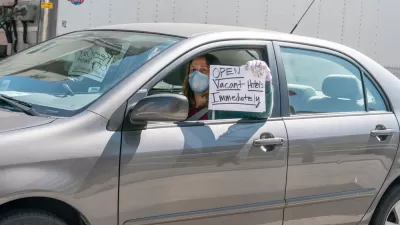As cities across America continue to pour public funds into limited use venues in their downtowns, American Dirt looks at why such venues, and convention centers in particular, refuse to engage with their surrounding streets or neighborhood.
With a focus on the Greater Columbus Convention Center, originally designed by Peter Eisenmann in 1993 and expanded six
years later, American Dirt probes why the designs for "big ticket items" such as arenas, stadia, and performance halls continue to ignore their context at a time when "street-level engagement for large projects in
city centers should, by this point, seem like a foregone conclusion."
While acknowledging the economic development benefits such facilities can bring, the author is alarmed by "an escalating tendency to
push these hulks right into the heart of the city, with practically no other
street-level storefronts, offices, or visual stimuli."
"Nothing this article explores is novel within the world of
urban design," notes the author, "but it warrants extra consideration because, even as many cities
are catching on to strong street-level engagement with other publicly funded
ventures, they continue to get convention centers wrong."
"Civic leaders across the country learned
a lesson from the relative isolation of Chicago's McCormick Place, but it's the
wrong lesson. Rather than taking a
cue that its isolated position estranged it from the hotels and the attractions
of downtown Chicago, other cities have imitated its hulking architecture while
displacing the buildings that originally helped a central business district
become a locus of all kinds of activity."
FULL STORY: Enticing visitors downtown…and then incarcerating them.

Planetizen Federal Action Tracker
A weekly monitor of how Trump’s orders and actions are impacting planners and planning in America.

Map: Where Senate Republicans Want to Sell Your Public Lands
For public land advocates, the Senate Republicans’ proposal to sell millions of acres of public land in the West is “the biggest fight of their careers.”

Restaurant Patios Were a Pandemic Win — Why Were They so Hard to Keep?
Social distancing requirements and changes in travel patterns prompted cities to pilot new uses for street and sidewalk space. Then it got complicated.

Platform Pilsner: Vancouver Transit Agency Releases... a Beer?
TransLink will receive a portion of every sale of the four-pack.

Toronto Weighs Cheaper Transit, Parking Hikes for Major Events
Special event rates would take effect during large festivals, sports games and concerts to ‘discourage driving, manage congestion and free up space for transit.”

Berlin to Consider Car-Free Zone Larger Than Manhattan
The area bound by the 22-mile Ringbahn would still allow 12 uses of a private automobile per year per person, and several other exemptions.
Urban Design for Planners 1: Software Tools
This six-course series explores essential urban design concepts using open source software and equips planners with the tools they need to participate fully in the urban design process.
Planning for Universal Design
Learn the tools for implementing Universal Design in planning regulations.
Heyer Gruel & Associates PA
JM Goldson LLC
Custer County Colorado
City of Camden Redevelopment Agency
City of Astoria
Transportation Research & Education Center (TREC) at Portland State University
Camden Redevelopment Agency
City of Claremont
Municipality of Princeton (NJ)





























